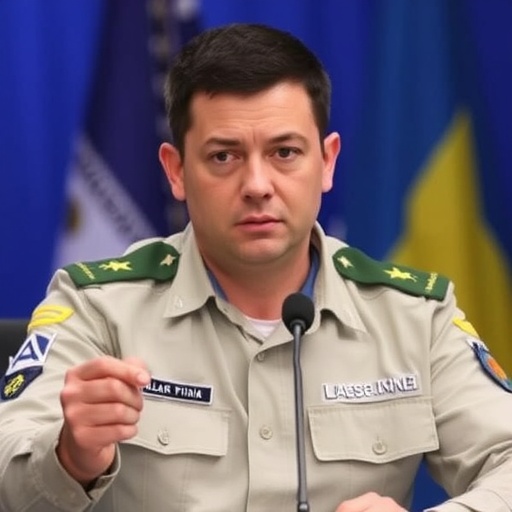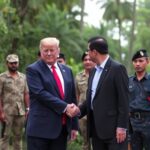Zelensky Demands More Patriot Systems as Russian Strikes Hammer Kyiv’s Defenses
In the shadow of yet another brutal barrage of Russian missiles and drones raining down on Kyiv, Ukrainian President Volodymyr Zelensky has issued a stark warning to the world: Ukraine desperately needs more US-made Patriot air defense systems to survive the escalating onslaught. The plea comes just hours after a massive attack that lit up the night sky over the capital, injuring dozens and underscoring the fragility of Ukraine’s skies against Russia’s relentless aggression.
- Kyiv’s Night of Terror: Unpacking the Russian Missile Onslaught
- Zelensky’s Forceful Plea: Why Ukraine Needs 25 More Patriots Now
- Patriot Power: How These Systems Are Ukraine’s Lifeline Against Russian Aggression
- Western Hesitation and Hurdles: Navigating Aid for Ukraine’s Air Defenses
- Escalation Risks and Hope: The Path Forward in Ukraine-Russia Standoff
Zelensky‘s call, delivered via a late-night video address, highlighted the urgent requirement for at least 25 additional Patriot systems through a direct purchase contract. “Every delay costs lives,” he stated emphatically, his voice laced with the exhaustion of a leader on the front lines of a protracted war. This renewed push for enhanced air defense capabilities arrives as Ukraine grapples with dwindling resources amid the ongoing conflict with Russia, now in its third year.
The latest assault, which involved over 100 drones and missiles launched from Russian territory, targeted critical infrastructure in Kyiv and surrounding areas. Ukrainian air defenses intercepted a significant portion, but several strikes caused fires and disruptions, forcing residents into bomb shelters once more. This incident is part of a pattern of intensified Russian attacks, aimed at wearing down Ukraine’s resolve and testing the limits of Western support.
Kyiv’s Night of Terror: Unpacking the Russian Missile Onslaught
The night of the attack began around 10 p.m. local time, as air raid sirens pierced the quiet of Kyiv’s streets. Russian forces unleashed a coordinated strike using a mix of Shahed drones, Kalibr cruise missiles, and ballistic projectiles, according to Ukraine’s Air Force Command. In total, 112 aerial threats were detected inbound, with Ukrainian defenses managing to neutralize 89 of them—a testament to the existing Patriot batteries’ effectiveness but also a grim reminder of the sheer volume Moscow is willing to deploy.
Explosions rocked multiple districts, including the Podil and Solomianskyi areas, where residential buildings and power grids took direct hits. Emergency services reported at least 15 injuries, including two children treated for shrapnel wounds. Power outages affected over 50,000 households, exacerbating the hardships of a population already battered by blackouts during the harsh winter months. “We heard the booms getting closer, and then the windows shook,” recounted a local resident, Olena Kovalenko, in an interview with Ukrainian media. Her words capture the raw fear that has become a daily reality for millions in Ukraine.
This barrage follows a similar pattern seen in recent weeks, with Russia ramping up its aerial campaigns in retaliation for Ukraine’s incursion into the Kursk region. Intelligence sources suggest that Moscow is drawing from its stockpiles of Iranian-supplied drones and domestically produced missiles, aiming to overwhelm Ukraine’s air defense network. The cost to Russia is immense—each Shahed drone runs about $20,000, while Patriots can intercept them at a fraction of that with precision—but the human toll on Ukraine remains devastating.
Historically, such attacks have targeted not just military sites but civilian infrastructure, leading to accusations of war crimes. The United Nations has documented over 10,000 civilian casualties since the invasion began in February 2022, with air strikes contributing significantly to that figure. Zelensky’s government has repeatedly called for international investigations, but the immediate priority remains survival.
Zelensky’s Forceful Plea: Why Ukraine Needs 25 More Patriots Now
Standing before the blue-and-yellow flag of Ukraine, President Zelensky addressed his nation and the global community with unyielding determination. “The Patriot systems we have saved countless lives, but they are not enough against this storm,” he declared. His request for 25 additional units is not arbitrary; it’s a calculated bid to create a robust, multi-layered air defense shield capable of covering Ukraine’s vast territory, from the eastern frontlines to the western borders.
Since the first Patriots arrived in Ukraine in late 2022, courtesy of the United States and Germany, they have proven indispensable. A single Patriot battery, comprising radar, launchers, and command units, can engage multiple threats simultaneously at ranges up to 100 kilometers. Ukrainian operators, trained hastily in the US, have racked up impressive interception rates—over 90% in some engagements—protecting key cities like Kyiv and Kharkiv from devastation.
Yet, Ukraine currently operates only a handful of these systems, often shuttling them between hotspots. Zelensky emphasized that procuring 25 more would allow for permanent deployments, reducing response times and coverage gaps. “This is about buying time for peace talks, for diplomacy, for our people’s future,” he added, invoking the emotional weight of a nation fighting for its existence.
The financial aspect is steep: each Patriot system costs around $1 billion, including missiles and maintenance. Ukraine proposes funding this through a long-term contract, potentially involving loans or grants from Western allies. Zelensky’s appeal targets not just the US but also NATO partners like Poland and Romania, which have expressed interest in bolstering regional defenses against Russian threats.
Patriot Power: How These Systems Are Ukraine’s Lifeline Against Russian Aggression
The MIM-104 Patriot, developed by Raytheon in the 1970s and continually upgraded, represents the pinnacle of Western air defense technology. In Ukraine’s context, it’s more than hardware—it’s a symbol of solidarity against Russia’s invasion. Deployed in batteries of 4-8 launchers, Patriots use advanced PAC-2 and PAC-3 missiles to intercept everything from drones to hypersonic threats, providing a critical layer beyond shorter-range systems like NASAMS or SAMP/T.
Statistics from the conflict paint a vivid picture of their impact. According to the Kiel Institute for the World Economy, Western air defense aid, led by Patriots, has prevented an estimated 20-30% more strikes from succeeding compared to pre-aid scenarios. In one notable defense of Kyiv in May 2023, Patriots downed 21 of 23 incoming missiles, averting what could have been a catastrophic blackout.
However, maintenance is a challenge. Each interception consumes missiles costing $3-4 million apiece, straining Ukraine’s limited supplies. Zelensky has praised the US for replenishing stocks but urged faster delivery: “We can’t wait for the next attack to prove our need.” Experts like Michael Kofman from the Carnegie Endowment note that Patriots force Russia to expend resources inefficiently, buying Ukraine breathing room for counteroffensives.
Beyond technical specs, the psychological boost is immense. Ukrainian soldiers, often outgunned on the ground, draw confidence from the skies being contested. “With Patriots, we feel the world has our back,” said Major Iryna Petrenko, an air defense coordinator, in a recent briefing.
Western Hesitation and Hurdles: Navigating Aid for Ukraine’s Air Defenses
Despite Zelensky’s impassioned call, securing more Patriots isn’t straightforward. The US, under President Biden, has committed over $50 billion in military aid to Ukraine since 2022, including several Patriot batteries. Yet, production bottlenecks at Lockheed Martin limit output to about 500 missiles annually, with global demand from allies like Saudi Arabia and Taiwan competing for shares.
Political winds add complexity. In Washington, Republican lawmakers have pushed for conditions on aid, tying it to Ukraine’s NATO aspirations or border security deals. “We support Ukraine, but resources are finite,” said Senate Foreign Relations Committee Ranking Member Jim Risch in a recent statement. Europe, too, faces constraints; Germany donated three systems but cited its own defense needs amid tensions with Russia.
Ukraine’s strategy involves diversification—seeking older models from allies or co-production deals. Talks with Israel for Iron Dome tech and with South Korea for similar systems are underway, but nothing matches the Patriot’s proven track record against Russian weapons. Economically, the war has boosted US defense stocks, with Raytheon shares up 15% year-over-year, indirectly funding further innovation.
International forums like the upcoming NATO summit in July could accelerate decisions. Zelensky plans to lobby personally, armed with data showing that every Patriot prevents dozens of civilian deaths. Aid fatigue is real, but recent Russian escalations, including strikes on Sumy and Odesa, have reignited urgency among donors.
In a broader context, this push for air defense ties into Ukraine’s reconstruction plans. The World Bank estimates $486 billion in damages, much from aerial destruction. Enhanced defenses could deter future attacks, paving the way for safe rebuilding and economic recovery.
Escalation Risks and Hope: The Path Forward in Ukraine-Russia Standoff
As Zelensky’s plea echoes across capitals, the implications for the Ukraine-Russia war are profound. More Patriots could shift the aerial balance, compelling Moscow to rethink its strategy of attrition. Russian President Vladimir Putin has dismissed such aid as “provocative,” vowing intensified responses, but analysts predict it might hasten negotiations if Ukraine gains leverage.
Looking ahead, Ukraine eyes integration into Western security architectures. A successful contract for 25 Patriots would not only fortify defenses but signal long-term commitment, potentially including F-16 jets and ATACMS missiles. Diplomatic channels, via Turkey and Qatar, hint at possible ceasefires, but air superiority remains key.
For ordinary Ukrainians, the wait is agonizing. In Kyiv’s cafes and bunkers, conversations turn to resilience: community solar panels powering homes, volunteer networks distributing aid. Zelensky’s vision is clear—a fortified Ukraine emerging stronger, ready to deter aggression and rebuild. As spring thaws the frontlines, the world’s response to this call could define the conflict’s next chapter, balancing deterrence with the dream of peace.
International observers, including UN Secretary-General António Guterres, have urged swift action: “Air defenses are not escalatory; they are lifesaving.” With Russia’s summer offensive looming, the clock ticks louder, pressing allies to act before the next wave descends.










